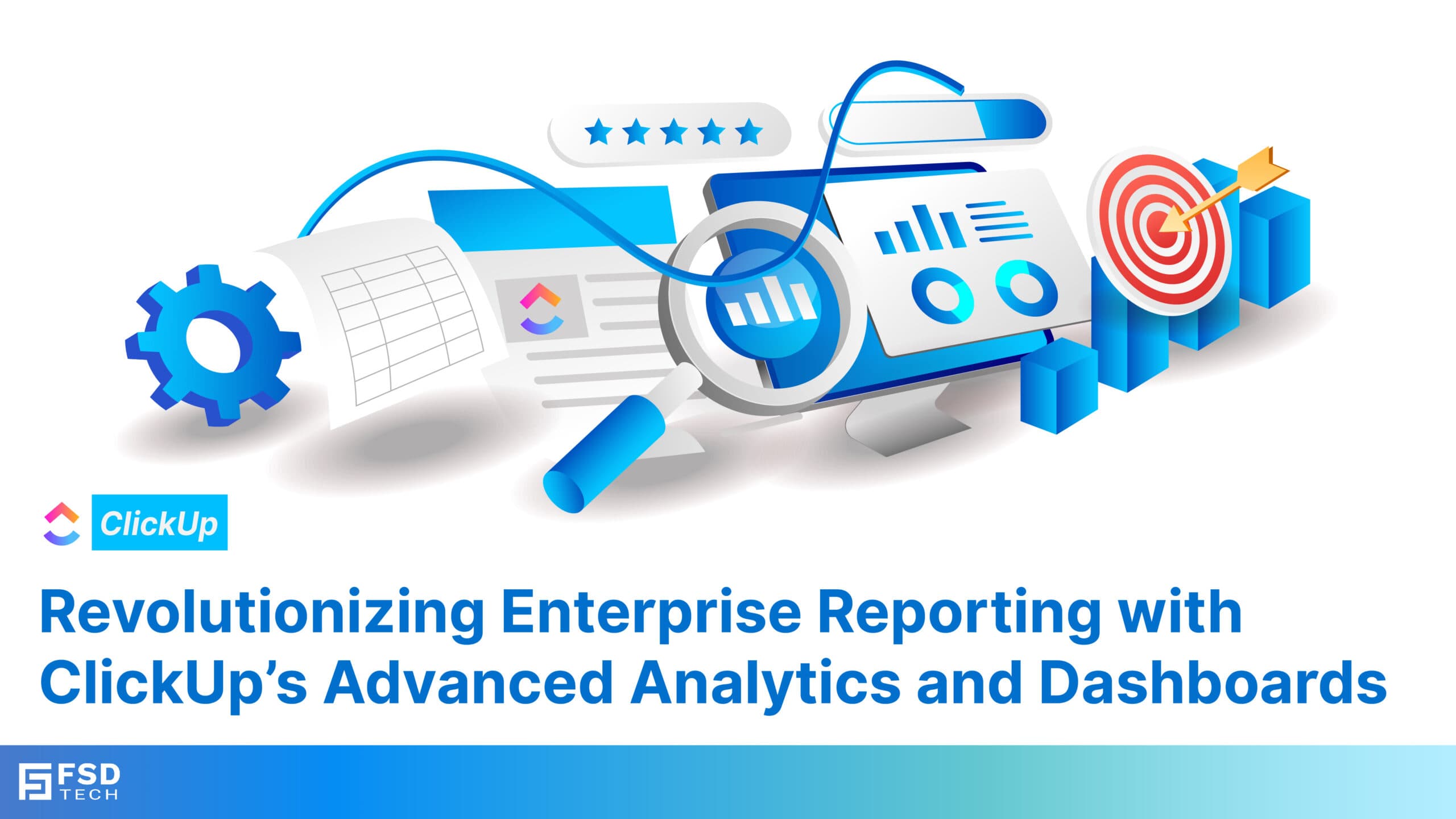
Inside Cato’s SASE Architecture: A Blueprint for Modern Security
🕓 January 26, 2025

ClickUp Reporting is essential for all companies. It helps your enterprise make smart, informed decisions, track progress, and ensure alignment with big strategic goals. But, let's be honest. Traditional project reporting can take a lot of time. It often has errors and misses real-time data.
Now, the question arises: How can you change this?
ClickUp revolutionizes enterprise project reporting with its advanced analytics and custom dashboards. This tool gives you a central place to track important metrics, see progress easily, and share insights that lead to action. Whether you are running one department or overseeing all company operations, ClickUp’s reporting tools empower every team to stay informed and aligned.
Take a read of this. You will get to know about how ClickUp’s analytics and dashboards transform project reporting for enterprises.
For enterprises managing large-scale, complex projects, effective project reporting is the foundation for strategic choices. It is to be noted that without good data, decisions can be weak.
Here is why enterprise reporting is critical for you:
ClickUp addresses these needs. It simplifies the entire reporting process and offers powerful tools for enterprise analytics..
Get Started with ClickUp Today!
ClickUp’s reporting tools provide everything your enterprise needs to create insightful, actionable reports. To understand these tools in clearer terms, let us look at the key features:
ClickUp’s Dashboards serve as the central hub for seeing project data. They offer customizable widgets that show your key metrics in real time.
Dashboards provide an immediate overview of performance. This ensures that stakeholders and team members stay informed on project status.
ClickUp offers a wide range of widgets. You can add them to Dashboards. This lets teams track specific metrics relevant to their project management needs.
Widgets ensure that your project reports are dynamic, relevant, and aligned with your organizational goals.
ClickUp’s filtering options make it easy to drill down into specific data points. This ensures that your reports are both accurate and relevant.
Filters allow your enterprise to focus on the metrics that matter most. This removes noise and enhances clarity.
ClickUp’s Goals feature allows teams to set, track, and measure progress toward objectives. Consequently, this ensures alignment with your overall enterprise strategies.
Goal tracking ensures that every task contributes to larger objectives. This drives both accountability and focus across your entire team.
ClickUp’s time tracking tools give insights into how resources are allocated. This helps teams optimize workflows and improve overall productivity.
Time tracking promotes accountability and ensures that all resources are used efficiently.
ClickUp lets users export reports in different formats. This makes it easy to share insights with stakeholders who may not be using the platform.
Exportable reports ensure that key insights are accessible to everyone, regardless of their technical expertise.
Also Read: How Creative Teams Use ClickUp to Manage Design Requests and Asset Reviews
ClickUp’s reporting tools are versatile and adaptable, making them suitable for a wide range of enterprise applications. Here’s how different teams leverage these features:
1. Operations Teams
2. Marketing Teams
3. Product Development Teams
4. Finance Teams
Pro Tip: Use Custom Fields to track budgets and expenses, and integrate them with Dashboard widgets for financial insights.
To maximize the value of ClickUp’s reporting and analytics features, your enterprise should follow a few best practices:
Also Read: Drive Better Feedback Loops Using ClickUp Forms & Automations
ClickUp’s advanced analytics and custom dashboards empower your enterprise to make data-driven decisions, track performance, and align teams with organizational goals. By simplifying project reporting and providing real-time insights, ClickUp ensures that every project is managed with clarity and precision.
So, when you need a single source of truth for your project management and enterprise analytics, ClickUp is the recommended choice.
We focus on client success and providing tools that give you ultimate clarity and control.
Contact us today to see how ClickUp can transform your complex workflows!
ClickUp provides Dashboards, custom widgets, and advanced analytics tools to track project and team performance.
Yes, Dashboards are fully customizable, allowing you to add widgets for tasks, time tracking, workload, and more.
You can use Dashboards to create widgets that visualize key metrics like task completion rates or revenue goals.
Yes, ClickUp includes time tracking features that integrate seamlessly into reporting and analytics.
ClickUp offers charts, graphs, and Gantt views to visually represent data for better insights.
Workload widgets and Dashboards show resource allocation, helping optimize team productivity.
Yes, Dashboards and reports can be shared via links or exported for external communication.
ClickUp integrates with tools like Tableau, Power BI, and Excel for advanced data analysis.
Yes, performance metrics like completed tasks, time logs, and goals can be visualized in real-time.
ClickUp’s reports are automatically updated in real-time, ensuring data accuracy and timeliness.
Yes, ClickUp offers pre-built Dashboard templates tailored for different industries and reporting needs.
Yes, custom fields and financial widgets allow you to track budgets and financial metrics effectively.
Dashboards aggregate data from multiple projects, offering a holistic view of organizational performance.
Automations can update report fields, notify stakeholders, or trigger actions based on analytics data.
Yes, you can use Dashboards to compare metrics across projects, teams, or time periods.

Anandhu holds a Master's degree in Computer Science and brings extensive expertise in Business Analysis and Project Management, delivering innovative solutions and driving success across diverse projects.
Share it with friends!
share your thoughts